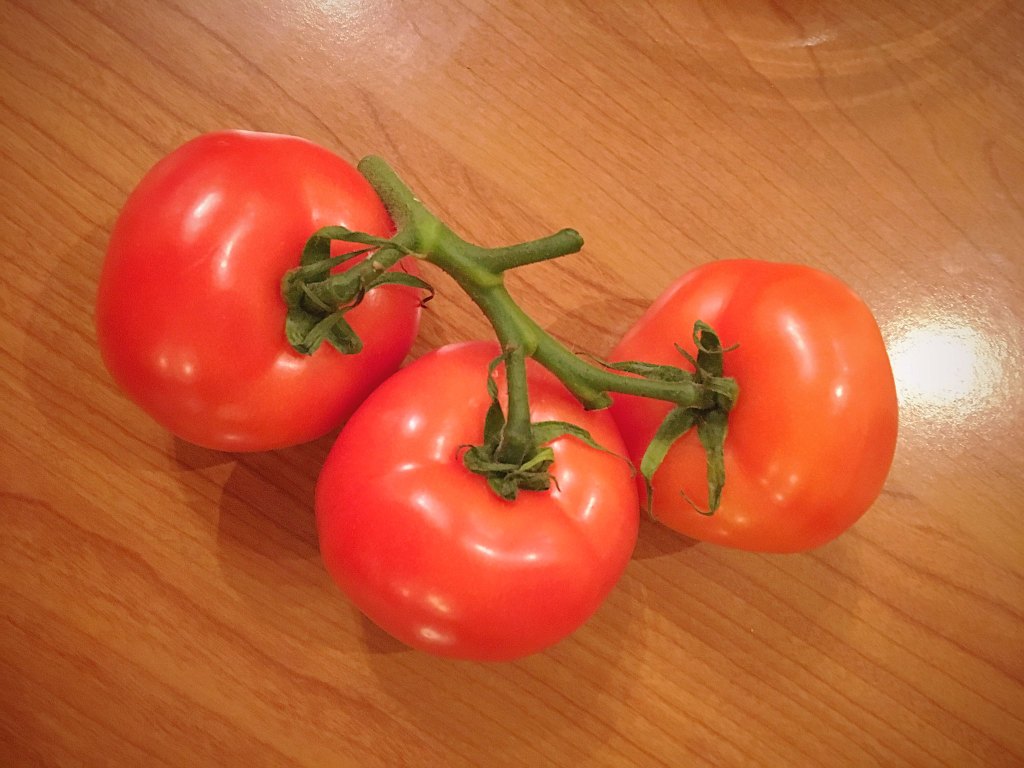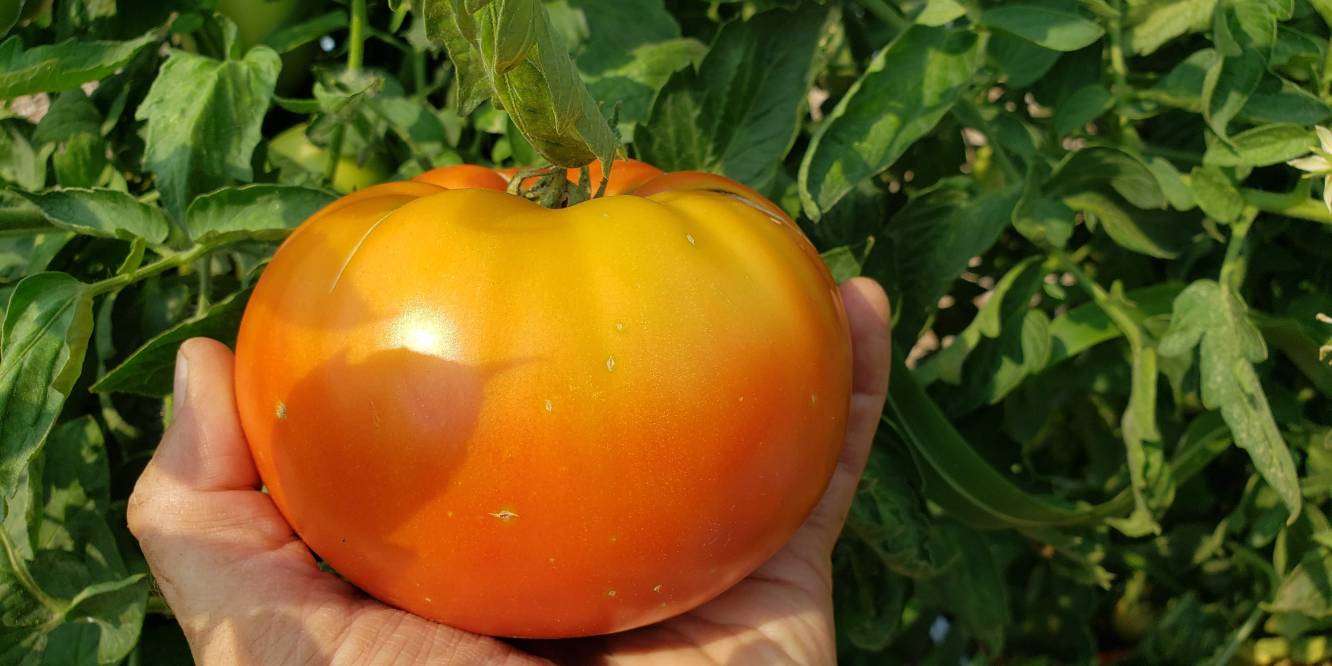Central Kansas gardeners are beginning to harvest their very first ripe tomatoes of 2023. Many gardeners wonder if a tomato has to remain on the vine until it is completely ripe to develop that perfect flavor. It often is surprising to find out that the answer is no.
Waiting to harvest tomatoes until they are fully ‘vine ripe’ certainly seems like the proper approach, but in reality there are several advantages to harvesting tomatoes slightly early-at what we call the ‘breaker stage’.
How tomatoes ripen
When a tomato reaches its mature size, it first becomes pale green. This is the very beginning of the ripening process, which is regulated by an internal gas called ethylene that is produced within the fruit.
As the tomato continues to ripen it reaches what is called the ‘breaker stage’. At this stage the tomato is about half green and half pinkish-red. At this point, layers of cells form across the stem of the tomato, which actually seals the tomato off from the vine of the plant.

At the breaker stage there is nothing more that can move from the plant into the fruit. Thus, at this stage the tomato can be harvested and ripened off the vine with no loss of flavor, quality or nutrition.
Harvesting a tomato at the breaker stage can offer several advantages to a home tomato grower. One main advantage of harvesting at the breaker stage is that it reduces the risk that birds, squirrels or other wildlife will damage fully vine-ripe tomatoes.

Other advantages of harvesting at the breaker stage include reducing the fruit load on the plant, limiting the chance of tomato fruit damage and cracking, and allowing the grower to control the final ripening process.
Controlling the ripening process
Kansas summer heat can often lead to problems with tomato ripening in general.
The best temperature for tomato growth and fruit development is 85 to 90F. When temperatures exceed 95-100 degrees F (common in Kansas), the plant goes into survival mode and concentrates only on moving water. Fruit development slows to a crawl. When temperatures moderate, even to the low to mid 90s, the fruit will ripen more quickly.
Tomato color is also affected by heat. When temperatures rise above 95 degrees F, red pigments do not form properly. This results in orange or off-colored fruit. While this doesn’t affect the edibility of the tomato, gardeners generally prefer a deep red fruit.
Kansas gardeners can avoid both of these problems by harvesting tomatoes at the breaker stage and controlling the final ripening process themselves. If tomatoes are picked at the breaker stage and brought into an air-conditioned house, they will ripen more quickly and develop a good, red color. A temperature of 75 to 85 degrees F works well for indoor ripening.
Storing tomatoes

For the very best flavor, it is best to store ripe tomatoes that you plan to eat fresh at room temperature (above 50 degrees). Temperatures between 39 and 50 degrees F can cause significant losses of flavor in tomatoes since aromatic compounds in the fruit decline the longer a tomato is exposed to the cooler temperature.
If tomatoes must be stored for a longer period of time, place them in the refrigerator but bring them to room temperature before serving.
The shoulders are the softest part of the tomato and so it is also best to store tomatoes with their stem end up to avoid bruising.
